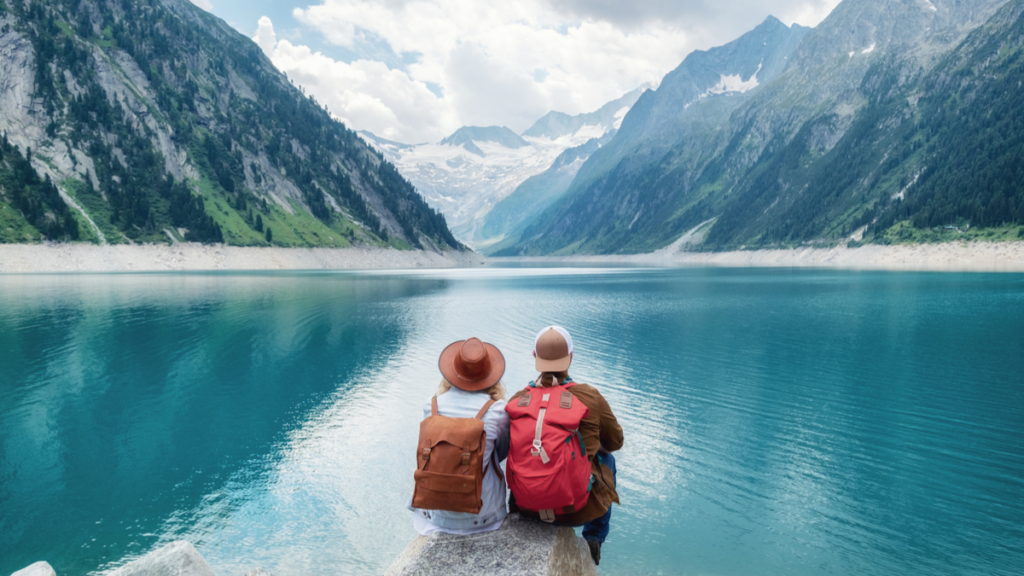New kinds of travellers willing to explore and discover the world emerge in a reshaped travel sector that keeps reinventing itself on its way to recovery.
Although we cannot travel as much as we used to do, travelling has not stopped. In this post you can find the most popular types of travellers that we will see throughout 2021.
Solo Travellers
Solitude is the new trend. In the current world where social distancing and other restrictions keep affecting the way in which different individuals and groups mix, going solo emerges as a suitable alternative for travelling.
These travellers have more freedom to plan itineraries based on their own interests and passions. On top of that, they tend to seek off-trail experiences for which they are willing to pay more due to the distinctiveness and personal meaning that these travels bring them. From the travel companies’ perspective, these travellers offer a golden opportunity to collect and analyse data from their digital customer journey to design ultra-customised experiences.
Early travellers
Overall, people are willing to travel again. The combination of a raging wanderlust and other factors, like the need to redeem travel vouchers of cancelled trips from 2020, is speeding bookings’ rates for the first half of 2021. Besides, the fear of missing out more time and opportunities for travelling is driving demand for particular segments like the cruise sector. Also, measures like the introduction of IATA’s travel pass, which will be implemented on airlines like Etihad and Emirates from March onwards, speed the sector’s recovery and give ‘early travellers’ the chance to keep discovering the world.
Travellers in bubbles
Some surveys show that up to 60% of travellers think of traveling as the best way to reconnect with family and friends. To do so, traveling in pods or bubbles seems to be the best alternative as it combines the opportunity to spend time with your loved ones in a protected environment while enjoying a different vacation. For these pods or bubbles to work, safety must be a priority for all the members taking part.
Protocols like wearing face masks, disinfecting common areas, or limiting contact with people who are not from these bubbles need to be followed during the whole experience. This type of travel is suitable for everyone, from couples to families with kids, to groups of friends. Besides, small bubbles can be combined to make bigger ones, yet this increases the risks of catching and spreading COVID-19 as more people is involved in the health and safety protocols.
Digital nomads
The growth experienced by remote work during the pandemic is providing an opportunity for many professionals to find a new ‘office’. Besides, many destinations are offering incentives that target remote workers such as extended visas, special travel discounts, or tax exemptions. For example, Las Palmas de Gran Canaria is catering for these travellers through a strategy based on the city’s quality of life combined with beach activities and a well-established community of remote workers who offer guidance to these travellers. It seems that remote work has come to stay, even after the COVID-19 era, so more and more people are expected to join the trend of working far from home and having different and even exotic workspaces across the planet.
‘Relaxury’ travellers
Never before relaxation has been so important. Travelling offers many benefits to individuals and communities, one of which is providing the chance to give some rest to both our bodies and minds from the daily bustle. In the current context, a new travellers’ segment seeks relaxation without neglecting some level of luxury.
Businesses are starting to offer luxury to a wider spectrum of travellers, from daycations to by-the-hour experiences at 5-star hotels. Also, emerging destinations present isolated and hidden spots where travellers can find peace of mind, far away from the crowds, and bask in the extravagance provided by the brightest experiences and services.
Purposeful travellers
As shared in my previous post, purposeful travel is a top travel trend for 2021. Purposeful travellers consciously make a positive contribution to local communities, as well as to their natural environments and cultural heritage, while enriching themselves. Regardless of the destination, there are many ways of practicing purposeful travel. From volunteering, to learning a new language abroad, to taking a gap year.
On top of that, purposeful travel helps to fight beliefs such as racism, homophobia, and sexism by experiencing and understanding diverse cultures and environments. So, purposeful travellers experience an accessible way of giving back to others while being the best version of yourself.
Local explorers
The pandemic has made us switch most of our travels from global to local. Due to both the travel restrictions worldwide and the levels of stress generated by COVID-19, travellers are aiming for more relaxed vacations. By going on ‘staycations’, people can avoid crowded places and attractions while they enjoy outdoor activities, stay in private accommodations, and rediscover local heritage and culture. This poses an opportunity for destinations as many of their citizens will decide to explore their own cities and regions. Some of the strategies that DMOs can follow range from promoting sustainable practices for exploring to putting in value ‘instagrammable’ experiences and services.
And you? What will your next travel look like?
